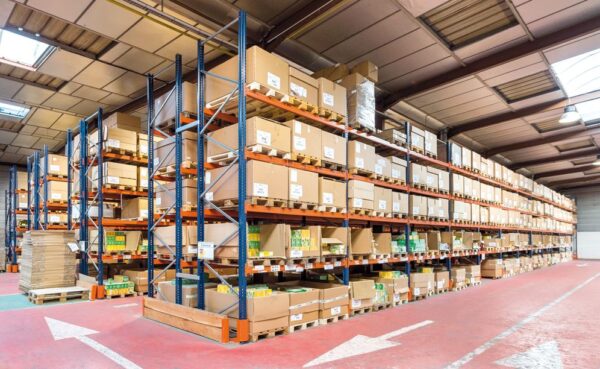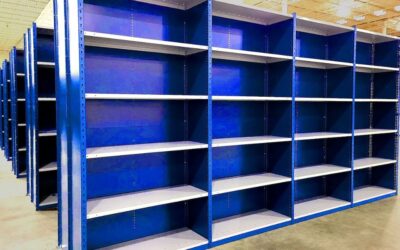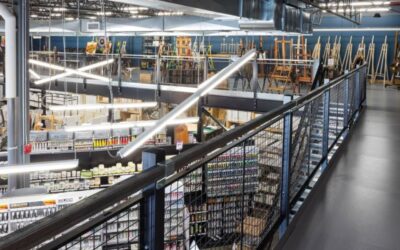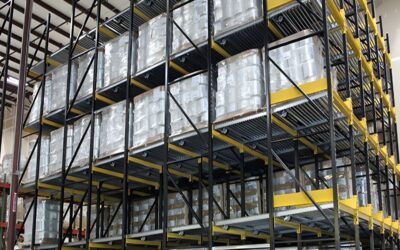Navigating the Essentials of Warehouse Design Services to Maximize Efficiency

In logistics and supply chain management, efficiency is paramount. Every aspect of the process, from procurement to delivery, plays a crucial role in ensuring smooth operations. Among these, warehouse design stands out as a cornerstone for success. Hence, a well-designed warehouse maximizes storage space, improves workflow, and ultimately boosts productivity. In this blog, we delve into the significance of warehouse design services. Further, exploring how they contribute to streamlining operations and driving business growth.
What are Warehouse Design Services?
Warehouse design solutions encompass a spectrum of activities aimed at optimizing the layout, organization, and functionality of storage facilities. Secondly, from initial conceptualization to implementation, these services involve careful planning. They aim to create spaces that align with the specific needs and goals of businesses. Whether it’s a new construction project or the revamping of an existing warehouse, professional design services ensure that each square foot is utilized efficiently.
Maximizing Space Utilization
One of the primary objectives of warehouse services is to maximize space utilization. In an era where real estate costs continue to rise, making the most of available space is critical for businesses aiming to minimize overheads. Through strategic layout planning and innovative storage solutions, warehouse designers can help companies optimize storage capacity. Additionally, they achieve this without compromising accessibility or safety. By utilizing vertical space and implementing efficient shelving systems, warehouses can accommodate higher inventory volumes within the same footprint. Integrating automated storage solutions further enhances efficiency and maximizes storage capacity.
Increasing Workflow Efficiency
Efficient workflow is the lifeline of any warehouse operation. Poorly designed layouts can lead to bottlenecks, delays, and unnecessary redundancies that impede productivity. Warehouse design solutions focus on creating layouts that facilitate seamless movement of goods from receiving to shipping areas. Besides this, by analyzing workflow patterns, traffic flow, and material handling processes, designers can identify opportunities for optimization. This may involve establishing dedicated zones for specific tasks. Implementing conveyor systems for material transport or reconfiguring storage arrangements to minimize travel distances.
Ensuring Safety and Compliance
In warehouse environments, safety is non-negotiable. Employees face hazards like heavy machinery, elevated platforms, and moving equipment. Warehouse design services prioritize safety by adhering to industry regulations and best practices. Designers incorporate features such as proper lighting, clear aisle markings, and ergonomic workstations. They also implement safety barriers to mitigate risks and prevent accidents. Moreover, they ensure compliance with fire codes, building regulations, and occupational health standards to create a secure working environment for employees.
Harnessing Technology for Efficiency
In today’s digital age, technology plays a pivotal role in warehouse operations. Secondly, warehouse services allow cutting-edge technologies to increase efficiency and accuracy across various processes. This may include the integration of warehouse management systems (WMS), RFID tracking, barcode scanning, and automated material handling systems. By using technology, warehouses can optimize inventory control, minimize errors, and improve order fulfillment speed. Designers work closely with IT specialists to seamlessly integrate these technologies into the warehouse infrastructure. Thus, ensuring smooth operations and real-time visibility of inventory movement.
Future-Proofing for Scalability
A well-designed warehouse isn’t just about meeting current needs; it’s about future-proofing for scalability and growth. Warehouse design facilities take a long-term view, considering factors such as projected growth, market trends, and evolving business requirements. Flexible layouts and modular storage solutions allow warehouses to adapt to changing demands. They achieve this without the need for extensive redesigns or disruptions to operations. Lastly, by investing in scalable design solutions upfront, businesses can minimize the need for costly expansions or relocations down the line.
Conclusion
Latest Blogs
How Modular Cabinets Enhance Warehouse Inventory Control
For more flexibility and management in your warehouse, discover how modular cabinets can improve workflow and inventory control with these features.
How Modular Cabinets Enhance Warehouse Inventory Control
For more flexibility and management in your warehouse, discover how modular cabinets can improve workflow and inventory control with these features.
Important Questions To Ask Before Hiring Mezzanine Builders
To achieve a layout that boosts work productivity, find out what kind of questions you should ask your mezzanine builders before they work in your warehouse.
Effective Strategies for Efficient Pallet Rack Installation
To optimize your warehouse layout, discover how to efficiently install a pallet rack system that maintains and improves work performance across your business.
Questions?
Let’s Chat About Your Warehouse Project Today!
Or all us at 515-635-1555
Save time. We will contact you
Provide your details, and we’ll help you find exactly what you need


